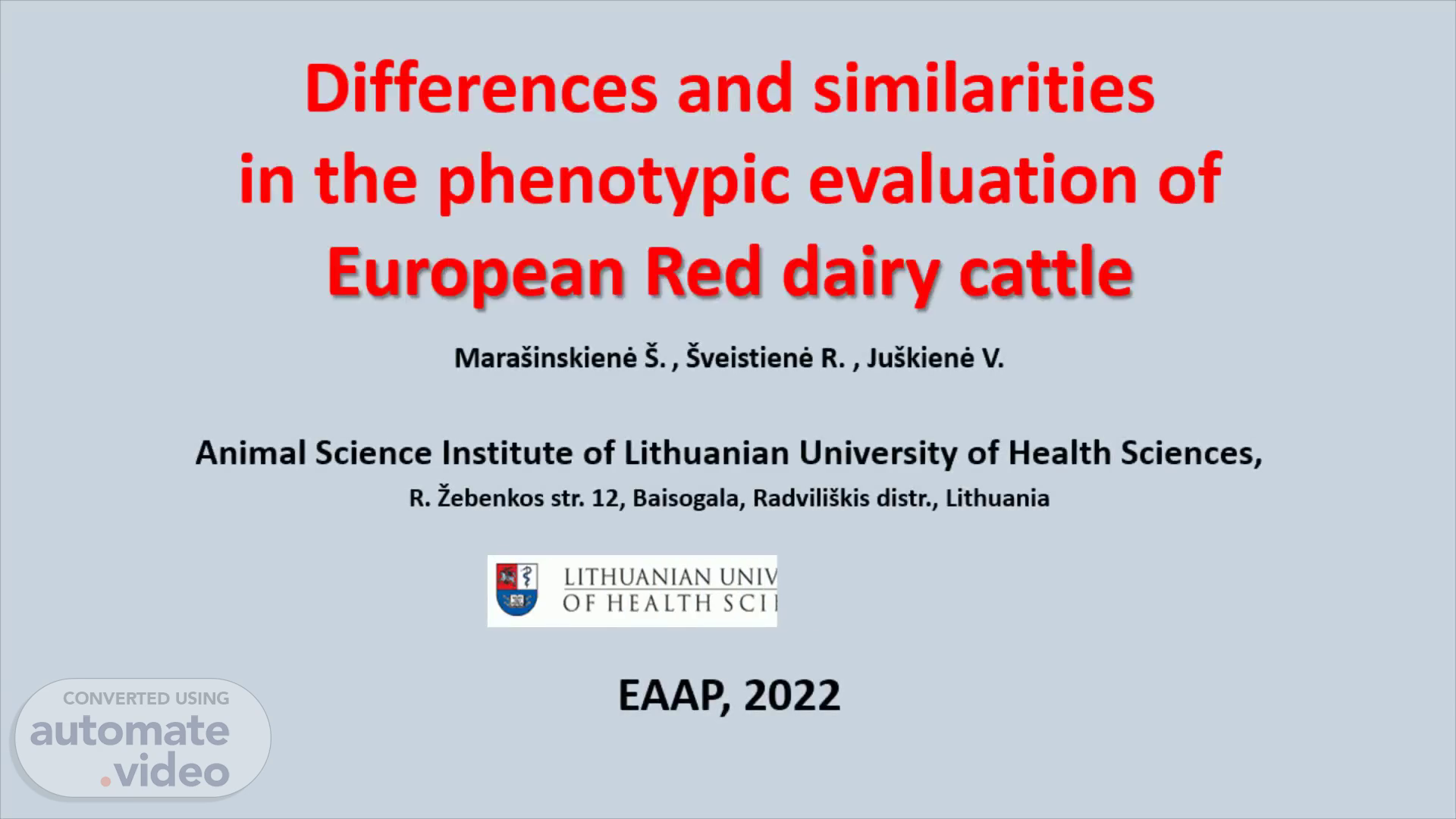
Differences and similarities in the phenotypic evaluation of European Red dairy cattle
Scene 1 (0s)
Differences and similarities in the phenotypic evaluation of European Red dairy cattle.
Scene 2 (12s)
INTRODUCTION. LITHUANIAN RED CATTLE. European Red Dairy Breeds (ERDB) represent a unique source of genetic diversity and are partly organized in trans-national breeding programs. The objective of the study was to analy s e the phenotype recording schemes for the ERDB and provide an overview on the existing phenotype recording procedures. METHODS The p repared questionnaires on the procedure for the assessment and registe r of the cattle phenotypic characteristics were analy s ed . For better understand ing of the difference s in data collection and genetic model applied by the countries participating in the ReDiverse study, information from their Genetic Evaluation Forms (GE Forms), as available on the Interbull Centre website between April and May 2019 (revised in 2020), were reviewed..
Scene 3 (1m 10s)
RESULTS. The results showed that international evaluation for all 7 traits ( production, conformation, udder health, longevity, calving, female fertility and workability ) of the Red cattle population w as performed in Germany, Netherlands, Denmark, Sweden, Finland and Norway ( Table 1.). The most important traits, according to the goals of breeding organizations, were production, conformation and udder health . Other traits , such as longevity and female fertility , shows different level of importance in different countries . Calving and workability traits are subjectively scored by the farmers ( Figure 1 .). Table1 . Breeds and traits included in the Interbull evaluations by c ountry Figure 1. Relevance of different phenotypic traits in breeding programs of different countries.